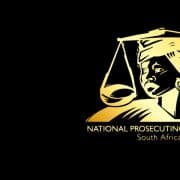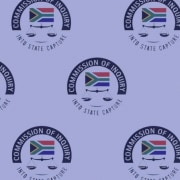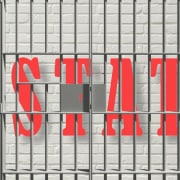|
Getting your Trinity Audio player ready...
|
By Karam Singh and Tharin Pillay
First published in New Agenda, issue 86, third quarter 2022
South Africa’s recent history has been characterised by deep-rooted political corruption, known as state capture. For the good of the country and for every honest person in it, it is imperative that all parties implicated in this state capture are dealt with decisively and that the country’s anti-corruption infrastructure is resuscitated and capacitated to this end.
While there is relatively widespread agreement on which structural changes are necessary,1 when it comes to the issue of individual prosecutions, the way forward is less clear. In an ideal world, the National Prosecuting Authority (NPA) would have the capacity to swiftly prosecute all involved. However, because their capacity was intentionally hollowed out during the state capture era, comprehensive and swift prosecutions seem unlikely at present. Given this lack of capacity, and in the absence of a track record of efficient and expedited high-profile corruption prosecutions, how can we expect the NPA to secure criminal accountability – to prosecute the high volume of state capture cases before it?
One response, first raised in 2020 by former Public Protector Thuli Madonsela, attorney Robert Appelbaum, and other private sector lawyers, has been to advocate for a process of amnesty for those involved in state capture. Although the specifics vary depending on the proposer, the basic idea is the same: facilitate a process whereby the relevant people can come forward and, if they meet certain conditions (such as disclosing what they know and paying back what they have taken), they will receive immunity from prosecution. Others in civil society and the legal profession think amnesty is unnecessary or inappropriate, and that we would be better served by supporting pre-existing anti-corruption institutions (particularly the NPA) to deliver justice.
In many ways, this debate reflects the broader debates currently raging in the country about the capacity of the country’s criminal justice system, the need to find ways to hold corrupt elites to account, and the way forward in the wake of the Zondo report. It is therefore worth unpacking the terms of this debate, what issues it turns upon and how we should understand it.
Our analysis is structured as follows. Section 1 contextualises and substantiates our understanding of both state capture and political amnesty. Section 2 takes stock of the factual and the normative claims that underpin the state capture debate in South Africa. Finally, section 3 provides Corruption Watch’s position in the debate, showing how, on a balance of factual and normative considerations, amnesty for state capture is unlikely to draw us closer to the prosperous future desired by all.
1. THE CONTEXT OF STATE CAPTURE AND POLITICAL AMNESTY
1.1 State capture is a species of corruption
Broadly, corruption is the “abuse of entrusted power for private gain”.2 It can take many forms, such as bribery, extortion and fraud, and what constitutes corruption has varied both over time and across regions (Bratu and Kažoka, 2018:57-72). Given its broad nature, it is useful to subdivide the concept.
First, we can distinguish bureaucratic and political corruption, in the same way the public administration can be distinguished from politics (Amundsen, 2019: Chap 1). Bureaucratic corruption typically occurs at the level of low- to mid-level bureaucrats – those tasked with implementing laws and policies – and involves access to services. Examples include paying a bribe to obtain a driver’s licence or skipping a queue at the department of Home Affairs. In contrast, political corruption occurs when senior political officials – those with the power to set the rules of political life – abuse their power to benefit themselves. This can be further disaggregated into “resource-extractive” and “power-preserving” corruption.
Resource-extractive corruption is motivated by a desire for wealth. It occurs when people steal the state’s resources to enrich themselves. It is typified by the many procurement related corruption scandals revealed by the Zondo report, for example in relation to the Passenger Rail Agency of South Africa, Transnet and Denel. The arms deal controversy is another example.
Power-preserving corruption, meanwhile, as the name suggests, is about preserving power. This often takes the form of a pattern of strategic appointments and dismissals whereby, within various key institutions – particularly those involved in criminal justice or the management of state resources – people with integrity are dismissed and replaced by people who are compliant or sympathetic to the desires of their corrupt principals. The loyalty of such people is often retained through kickbacks or other benefits in kind proportional to their status: compare the R300 000 per month Dudu Myeni received with the seemingly petty gratuities of braai packs and boxes of liquor, as revealed by the Bosasa case study.3 In this way, everyone becomes complicit.
This pattern is often accompanied by systematic targeting and harassing of any resistant individuals to render their working environment so inhospitable that they are forced to resign or leave; slowly leaving only the individuals who are sympathetic to or complicit in corrupt activity to staff key institutions.
On this front too, the Zondo report provides many examples, such as Tom Moyane’s appointment to the South African Revenue Service (Sars), appointments at the NPA, and to various boards of directors at state-owned enterprises (SOEs). There is also evidence of a corporate culture that is inhospitable to disclosure, transparency and specifically whistle-blower protection across many SOEs, such as South African Airways (SAA), Denel and Eskom. Another example is the State Security Agency (SSA) merger in the intelligence sector, done by proclamation and without legal basis (RSA, 2022: Part 1).
In this way, corrupt elites are able to seize control of key institutions and denude them of their capacity to prevent corruption, thus allowing the theft of resources to proceed unabated. Acts to preserve power are self-entrenching. The more such actions are taken, the more power becomes centralised in the hands of the corrupt, and the harder it becomes to dislodge this power.
With this in mind, state capture can be understood as a widespread conspiracy perpetrated by what Zondo calls the “Gupta racketeering enterprise”, that used the logic of power-preserving corruption to seize control of key institutions and change the rules of political life, thereby enabling widespread resource-extractive corruption.
The vital role played by the private sector is also noteworthy. Private professionals in the service of transnational corporations facilitated, enabled and conspired to capture key South African state institutions and enterprises. Without the help of such lawyers, accountants and banks, who legitimised the stolen funds and stored them offshore, resource-extractive corruption would have been impossible.
1.2 Political amnesty
An amnesty is an official pardon extended by a government to a person or a group of people legally forgiving them for certain offences.4 While in theory a government can offer amnesty for any offence, it is particularly useful “under circumstances in which law enforcement agencies are unable to function effectively due to widespread delinquency among citizens” (Roman, 2010:396).
Democratic South Africa has seen amnesty offered to individuals who have violated tax and exchange control regulations (see Appelbaum, et al, 2020) and those in possession of unlicensed firearms.5 Such amnesties can be distinguished from political amnesties, which are offered in relation to offences that impact the very functioning of a state, which are the focus of this paper.
Historically, political amnesties have been declared at the end of a conflict or following a change in a territory’s governing authority to “pave the way to peace” (Roman, 2010:395). Such amnesties aim to “establish a turning point from one state of affairs to another” (Ibid.). They are, fundamentally, a transitory measure. Perhaps the most well-known example in recent history is a homegrown one – the Truth and Reconciliation Commission (TRC), established by the Promotion of National Unity and Reconciliation Act, 1995, to assist South Africa in transitioning from apartheid to democracy.
One of the TRC’s primary tasks was to decide whether to grant applicants amnesty for acts/omissions undertaken with a political objective.6 Decisions to grant amnesty were taken by the TRC’s Amnesty Committee.7 Of the more than 7 000 applications the committee received, more than 5 000 were refused,8 yet virtually nobody who was refused amnesty was subsequently prosecuted. Further, what has emerged over time and through the affidavit of former NPA head Vusi Pikoli, is that TRC-identified perpetrators who did not apply for amnesty were shielded from subsequent prosecution. As Pikoli attested, influential forces in government did not want to see former comrades prosecuted and unlawfully pressured him to stop the post-TRC prosecutions.
The spirit in which the TRC amnesty was offered is encapsulated by the post-amble of South Africa’s Interim Constitution, which has become an iconic text in the literature on transitional justice. It reads:
This Constitution provides a historic bridge between the past of a deeply divided society characterised by strife, conflict, untold suffering and injustice, and a future founded on the recognition of human rights, democracy and peaceful coexistence and development opportunities for all South Africans. . .
The pursuit of national unity, the well-being of all South African citizens and peace require reconciliation between the people of South Africa and the reconstruction of society. . .
In order to advance such reconciliation and reconstruction, amnesty shall be granted in respect of acts, omissions and offences associated with political objectives and committed in the course of the conflicts of the past.9
However, as is discussed in section 3, whether political amnesty is effective in furthering its intended goals depends largely on the context in which it is deployed. Any case for political amnesty that does not adequately account for this context is bound to fall short.
2. CROSS-CUTTING ISSUES IN THE STATE CAPTURE AMNESTY DEBATE
Before laying out the case for why, in the context of modern South Africa, amnesty for state capture is unlikely to deliver justice, it is worth reviewing some of the common themes undergirding the debate and distinguishing between claims of fact and claims of value. While factual claims can at least theoretically be proven or disproven by reference to evidence, even if in practice there is insufficient evidence at the time to draw a strong conclusion, normative claims turn on value judgements, and so cannot be proved by reference to factual states of affairs alone. Since both types of claims frequently crop up in this debate, they are addressed separately.
The major proponents of state capture-related amnesty include Thuli Madonsela,10 a group of private sector lawyers, including Robert Appelbaum,11 businessman Ian Donovan,12 and Professor Pierre Faure. Those opposed to the idea include Executive Director of Open Secrets Hennie Van Vuuren, and Professors Richard Calland13 and Mcebisi Ndletyana who is Head of the Political-Economy faculty at the Mapungubwe Institute for Strategic Reflection (MISTRA).14 This is not an exhaustive list of those engaged in the debate, but reference to these authors’ opinions helps define the debate’s contours.
2.1 Factual issues The capacity of the criminal justice system is inadequate
A central claim underpinning this debate is that “given the sheer volume of perpetrators and the intricate web of crimes committed” (Appelbaum et al, 2022), South Africa’s criminal justice institutions at present lack the capacity to effectively investigate and prosecute all instances of state capture. A stronger claim sometimes made by those in favour of an amnesty process is that these institutions lack not just the capacity to prosecute all relevant cases, but to successfully prosecute any high-profile case at all (Ibid.). The evidence given for this is the lack of successful high-profile prosecutions to date by the NPA.
Incentives to appear before an amnesty process are critical to success
Both sides of the debate agree that the threat of prosecution is a prerequisite for an amnesty process to function successfully (Appelbaum, et al, 2022) because, without this threat, criminals have no incentive to come forward. It would be much easier for them to retain their ill-gotten gains and remain in the shadows.
An amnesty process may not provide further evidential value
In Madonsela’s framing, one virtue of an amnesty process is that it would provide “a clearer picture of what happened” in the state capture era, to “help tighten cases for prosecution” (Mafolo, 2022). Others, such as Michael Marchant of Open Secrets,15 view this as a weak justification because sufficient evidence to prosecute already exists.
In our opinion, it seems curious that the call for amnesty for state capture – to have a clearer picture – would come at the conclusion of almost four years of hearings and a comprehensive report from the Zondo Commission. What further truth do we hope will be revealed to provide a clear picture of what happened under state capture? While such a call may have been justified on the basis of truth-seeking prior to the institution of a comprehensive commission of inquiry, post-commission, where there is already a relatively clear picture, it is far less palatable.
Amnesty processes tend to favour elites
Some commentators such as long-time anti-corruption campaigner Hennie van Vuuren have argued that “amnesties almost always favour the powerful and not the poor”.16 He argues amnesties are about allowing elites to renegotiate power, rather than pursuing justice. This argument also resonates with Corruption Watch.
Part of the all-of-society approach to fighting corruption, as envisioned by the National Anti-Corruption Strategy and part of the foundation of Corruption Watch since 2012, is the notion that South Africa can create an active citizenry through encouraging the reporting of corrupt activities and in so doing, create resistance among citizens by instilling a low tolerance for anyone who supports or facilitates corruption. An amnesty process for state capture is in tension with an active citizenry calling out corruption.
New institutional arrangements and conditions are necessary
All sides accept that an amnesty process would require new legislation and the creation of a new institution capable of soliciting and adjudicating amnesty claims. What this institutional arrangement should look like, however, varies depending on who proposes it, as do the conditions for being granted amnesty.
Generally, creating new institutional arrangements to fight corruption has been understand as requiring the enhancement of law enforcement powers, usually in the form of a dedicated anti-corruption agency in line with the principles outlined in the UN Convention against Corruption and as endorsed by the Constitutional Court in the Glenister 2 judgment relating to the Scorpions’ dissolution.17 The creation of new, stronger institutional arrangements should have anti-corruption agencies at their centre, recognising the value of the prosecution-led investigations, which have further been endorsed as constitutional following the Khampepe Commission of Inquiry into the mandate and location of the Directorate of Special Operations (DSO).18
2.2 Normative Issues
The notion of a ‘clean slate’ is flawed
Those in favour of an amnesty process suggest it would give the country a “clean slate” (Appelbaum et al, 2020). But what constitutes a clean slate? And is such a slate either necessary or desirable? Recall that, although President Cyril Ramaphosa came to power proclaiming a new dawn, South Africa has seen rampant corruption continue post-2018, most notably in the provision of personal protective equipment (PPE) in response to the Covid-19 pandemic. Despite leadership with some commitment to rebuilding state institutions in the wake of state capture, the vulnerabilities within the state and the policy landscape remain – particularly in public procurement. Whether one calls it a new dawn or a clean slate, it is difficult to imagine amnesty leading to a reduction in corrupt activities without widespread institutional changes.
The shapes of justice and accountability remain unclear
In the wake of state capture, “what form should criminal justice take?” is an ongoing question. Should South Africa prioritise retribution in the form of prosecution, or can restorative justice be achieved through an amnesty process? On this score, the Zondo report potentially missed an opportunity to weigh in – to envision what an enhanced and empowered criminal justice system, capable of countering systemic corruption, might look like.
Corruption Watch believes that a reinvigorated fight against corruption should envision a range of law reform initiatives, such as unexplained wealth orders, stronger prohibitions on politically exposed persons doing business with government, and reverse onus provisions against the criminally accused. We should also consider moving away from the model wherein the NPA has a monopoly on prosecutions and establish dedicated prosecuting capacity for an independent anti-corruption agency. Such an agency could seek a variety of remedies, including asset recovery, black-listing and debarment alongside prosecutions involving custodial sentences.
3. CONCLUSION: CHARTING A COURSE THROUGH THE AMNESTY DEBATE
Having explored the contours of the debate, Corruption Watch believes it is possible to chart a course through it. In so doing, it is useful to distinguish between the type of amnesty envisioned by Madonsela (“spiderweb” amnesty), and the type envisioned by others, such as Appelbaum (general amnesty). Madonsela envisions amnesty as a tool to pull in those who played a more “clerical” or “bureaucratic” role in state capture – those who were not necessarily political elites, but rather cogs in the machine who received some form of kickback – and to break the networks that sustain corruption thereby ensuring that state institutions are cleansed of corrupt actors.
For Appelbaum, on the other hand, the purpose of amnesty is not to focus on those who played a minor facilitative role, but to aid in the prosecution of kingpins and other elites. In his conception, amnesty and something like an anti-corruption commission as envisioned by Zondo are both necessary to bring us closer to justice.
While Madonsela’s justification is more plausible than Appelbaum’s, ultimately both fall short. Our argument against amnesty departs from the idea that amnesty can only be effective if there is a credible threat of prosecution, and that such amnesty would only be justified in the absence of a commission of inquiry.
If the NPA were able to prosecute effectively, South Africa would not need an amnesty process to begin with. So it is not possible to justify amnesty on the basis of the criminal justice system’s lack of capacity; and this capacity problem cannot be solved by introducing amnesty. As the TRC established, most who were refused amnesty were never prosecuted in any event. The TRC delivered some truth, as amnesties seek to do – but it did not deliver reconciliation and it certainly did not deliver justice.
More broadly, do we need a transitional measure to ensure political stability, or do we need a process of meaningful accountability? The latter seems more likely. In addition, there are good reasons to think the amnesty process would fail. These include the danger of the process/amnesty institution being politically captured; the likely failure of any consequences post amnesty; and the aforementioned lack of incentive for people to come forward.
If the NPA does indeed lack the capacity to investigate relevant information, there would be no way to verify the veracity of the claims being made by those seeking amnesty. If the amnesty process is politically captured or otherwise seen to be a sham, it would be disastrous for citizens’ faith in democracy and investor confidence.
The Zondo Commission has provided enough evidence for the NPA to work with. The justice bottleneck is not due to a lack of evidence but a lack of capacity. In this regard then, it would be better to find ways to capacitate and support the NPA directly, potentially by giving it the power to negotiate deferred prosecution agreements, supporting private prosecutions, or setting up dedicated corruption courts with dedicated funding to bring in more prosecutorial capacity, including from the private sector.
Deferred prosecution agreements should be seen as a compromise of sorts, which gives the prosecution services an opportunity to extract some accountability from corporate actors who are prepared to self-disclose wrong-doing in exchange for something less than criminal prosecution. The consequence management in such an agreement may include a partial or temporary debarment or blacklisting with the threat of prosecution in cases of recidivism. Such agreements should not be subject to strict non-disclosure agreements as we see in other jurisdictions.
The merit to the amnesty argument rests in its desire to create a culture of pro-active disclosures. This is something worth striving towards, by providing incentives to those willing to disclose. But it remains a huge uncertainty that such an approach would help turn a corner or clear the slate. Rather, we should think about giving the NPA some authority to, for example, negotiate deferred prosecution agreements, where strategically these are deemed to have value in uncovering further criminality.
Because it is unlikely to receive wide buy-in from perpetrators and enablers, and because it is unlikely that consequences will flow from the process, amnesty is unlikely to draw us closer to justice, either retributive or restorative. Rather than looking for quick fixes, we need to understand what is most appropriate for our political context.
Institutionally, we at Corruption Watch believe that establishing an effective, independent, anti-corruption agency to build on the existing capacity embedded in the multi-agency approach is a necessary pre-condition for trying to “break the spiderweb” to which Madonsela refers.
Without effective anti-corruption agencies, including the NPA, amnesty alone will be insufficient. So we would do better to focus directly on how to strengthen existing institutions. In addition we could foster the creation of a dedicated anti-corruption institution as per the recommendations of the Zondo Commission and as envisioned by the National Anti-Corruption Strategy.
REFERENCES
Amundsen, Inge, (ed.) 2019. Political corruption in Africa: Extraction and power preservation. Edward Elgar Publishing,
Appelbaum, R., Rome, G., Mohapi, S. and Hopkins, R. 2020. To Recuperate from the Injurious Legacy of State Capture, South Africa Needs to Adopt a Comprehensive Amnesty Process. Daily Maverick, 5 March. Available at https://www.dailymaverick. co.za/wp-content/uploads/to-recuperate-fromthe-injurious-legacy-of-state-capture-southafrica-needs-to-adopt-a-comprehensive-amnestyprocess-final-clean-03032020.pdf
Appelbaum, R., Rome, G., Mohapi, S. and Hopkins, R. 2022. Corruption op ed: A bitter pill it is, but there are sound reasons for giving amnesty to alleged State Capture wrongdoers. Daily Maverick, 27 June. Available at https://www.dailymaverick.co.za/ article/2022-06-27-a-bitter-pill-it-is-but-there-aresound-reasons-for-giving-amnesty-to-allegedstate-capture-wrongdoers/
Bhorat, H. et al. 2017 Betrayal of the promise: how South Africa is being stolen. State Capacity Research Project, Public Affairs Research Institute (PARI).
Bratu, R. and Kažoka, I. 2018. Metaphors of corruption in the news media coverage of seven European countries. European Journal of Communication 33.1. Mafolo, K. 2022. The Big Debate: ‘As a country, we can’t live in perpetual amnesty’ Experts divided on fate of State Capture perpetrators, Daily Maverick, 4 July. Available at https://www. dailymaverick.co.za/article/2022-07-04-expertsdivided-on-whether-amnesty-should-be-givento-state-capture-perpetrators/
Roman, D. 2010. Transitions to clean government: Amnesty as an anticorruption measure. Australian Journal of Political Science, 45.3 at 396.
RSA, 2022. Judicial Commission of Inquiry into Allegations of State Capture, Corruption and Fraud in the Public Sector Including Organs of State Report, Parts 1-6. Chairperson: Justice R.M.M Zondo, Chief Justice of the Republic of South Africa. 22 June. Available at https://www.statecapture.org.za.
World Bank Group. 2018. Overcoming poverty and inequality in South Africa: An assessment of drivers, constraints and opportunities. World Bank.
ENDNOTES
1. Such changes include vastly improved protection for whistle-blowers, an overhaul of the country’s public procurement system and the creation of beneficial ownership registries to make it more difficult for criminals to launder money through shell companies. Implementing these changes is of course easier said than done. Further, note that there is less agreement on the question of institutional arrangements – are new anti-corruption institutions required to counter corruption? This issue is outside the scope of the present paper.
2. As defined by Transparency International. See https://www.transparency.org/en/what-iscorruption
3. See the discussion of “industrial scale bribes”, “loaves of bread”, and “breadroll requirements” in section G of part III of the Zondo Report.
4. Drawn from a combination of dictionary definitions.
5. South Africa has had five gun amnesties – https://www.gov.za/speeches/police-illegalfirearm-owners-getting-second-chance-newfirearm-amnesty-period-1-aug-2020
6. Its other objectives were to establish as complete a picture as possible of the many gross violations of human rights that characterised apartheid; to establish the fate/whereabouts of victims; and to compile a comprehensive report of its findings and recommendations. See Paul Gready, The Era of Transitional Justice: The Aftermath of the Truth and Reconciliation Commission in South Africa and Beyond, p4.
7. https://justice.gov.za/trc/trccom.html.
8. https://justice.gov.za/trc/amntrans/index.htm.
9. Constitution, 1993.
13. https://theconversation.com/why-an-amnestyfor-grand-corruption-in-south-africa-is-a-badidea-148279.
14. Head of the Political-Economy faculty at the Mapungubwe Institute for Strategic Reflection (MISTRA) https://mg.co.za/opinion/2022-0710-amnesty-for-state-capture-will-entrenchimpunity-for-wrongdoing/.
15. https://www.youtube.com/watch?v=JVbw_ N65W3I.
16. https://www.businesslive.co.za/fm/features/202003-12-why-amnesty-for-state-capture-wont-work/.
17. Glenister v President of the Republic of South Africa and Others (CCT 48/10) [2011] ZACC 6; 2011 (3) SA 347 (CC); 2011 (7) BCLR 651 (CC) (17 March 2011). Available at http://www.saflii.org/za/cases/ZACC/2011/6. html#sdfootnote6sym








